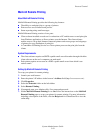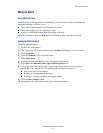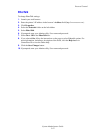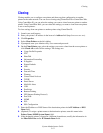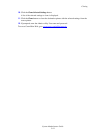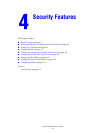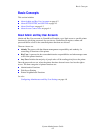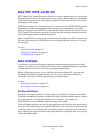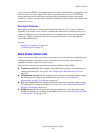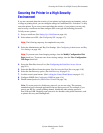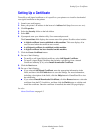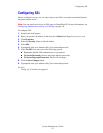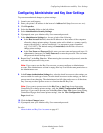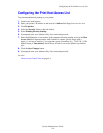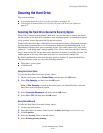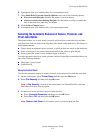Basic Concepts
System Administrator Guide
4-4
If you want to use HTTPS, each printer must have a unique certificate that is accepted by each
browser used to access the printer. This allows the printer web server to use HTTPS and
encrypt data between the web browser and the printer. In addition, because each printer’s
certificate is unique, you must load a different certificate into the browser for each printer the
browser will access.
Root-Signed Certificates
Root-signed certificates are from a trusted Certificate Authority (CA). Using a certificate
signed by a CA enables you to load one certificate into each browser, allowing access to all
printers. Certificates from a trusted third party are considered more secure than self-signed
certificates. Unlike self-signed certificates, root-signed certificates are not susceptible to
man-in-the-middle attacks.
See also:
Setting Up a Certificate on page 4-6
Configuring SSL on page 4-7
About Access Control Lists
Access control lists enable you to limit access to devices, as well as device configuration and
management features. By default, access control lists are unrestricted, which means all
computers and host systems are allowed access.
The printer has four access control lists that may be configured using CWIS:
■ Print Host Access List: The computers from which users can print. For information on
setting up the Print Host Access List, see Configuring the Print Host Access List on
page 4-9.
■ Administrator Access List: The computers from which you can change printer settings.
For information on setting up the Administrator Access List, see Configuring
Administrator and Key User Settings on page 4-8.
■ Key User Access List: The computers from which key users can change printer settings.
For information on setting up the Key User Access List, see Configuring Administrator
and Key User Settings on page 4-8.
■ SNMP Access List: The host machines that are authorized to access the printer using
SNMP. For information on setting up the SNMP Access List, see Configuring the SNMP
Access Control List on page 4-18.



